This post may contain affiliate links. For more information, please see our affiliate policy.
Tangy, crunchy, and oh, so good for you, here’s How to Make Sauerkraut the old-fashioned way. All you need is salt, cabbage, and time; you’ll be thrilled with just how delicious and easy it is.
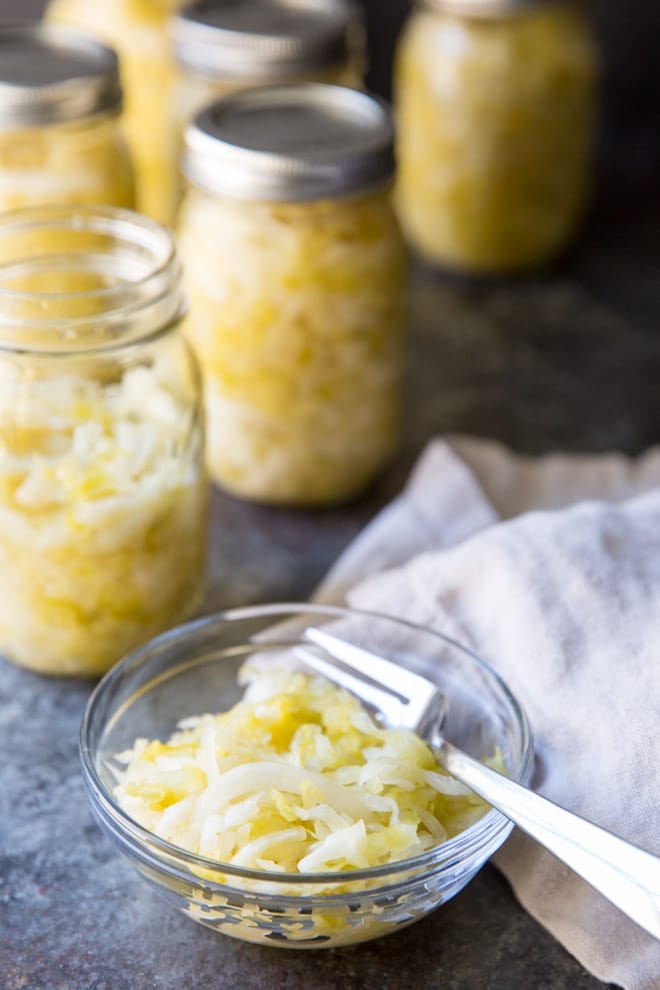
What you need to make sauerkraut:
- Bowl. A bowl large enough to contain five pounds of cabbage.
- A crock or large glass jar. Well-stocked hardware stores or specialty cooking shops carry a really nice selection of ceramic crocks that were made exactly for this purpose. (Not just to hold all your spoons and spatulas on the counter!) Or ask your grandma if you can borrow hers for a while.
- A small plate. A plate (or other flat object) small enough to fit down into the crock, to keep the cabbage submerged. I used a lid from a deli container because it was flexible (just be sure to sterilize whatever you use!)
- Cheescloth. Layers of cheesecloth cover the top of the crock during fermentation.
- Weight. A clean rock or a water-filled mason jar works great. Something to hold the plate down on top of the cabbage. Don’t forget to sterilize whatever you use!
How thin to cut cabbage for sauerkraut?
Well, that depends on how you like it. Thick or thin, long or short, it’s up to you.
How to make Sauerkraut:
PS: When making homemade sauerkraut or any other fermented food, it’s really important to use super-clean, even sterilized equipment. Running everything through the dishwasher is always a good idea.
- Cut up the cabbage. Remove the soft outer leaves of the head of cabbage and cut into quarters.
- Then in a big bowl, add half of the shredded cabbage and half of the Kosher salt. How much salt to make sauerkraut? This recipe uses a sauerkraut salt ratio of 3 tablespoons salt for 5 pounds of cabbage.
- Now for the fun part! Using clean hands, knead the cabbage and salt together for 3-5 minutes. The goal is to get the cabbage to soften and begin to release moisture. Knead, massage, and then knead some more! Stir in the jumpier berries (or any other spices you choose to add, see below) and combine.
- Next, one handful at a time, move the cabbage into the clean crock and press it down into the bottom of the crock using your fist or a flat potato masher.
- Place the plate or other small, flat item inside the crock.
- Weigh it down with your choice of weight.
- Cover the crock with a few layers of cheesecloth and let it sit and think about things for a couple hours.
- After two hours, four hours, and six hours, remove the cheesecloth and push down on the plate firmly to check if the cabbage is fully submerged in the brine. If at the end of 6 hours the cabbage is still not fully submerged, you can add some salt water to juice things up a bit.
- Once you have fully submerged cabbage, all you have to do is allow the cabbage to ferment at room temperature (between 65 and 75 degrees).
How long to ferment sauerkraut?
Good news! In a few days, as long as you use a clean utensil, you get to start tasting and sampling the sauerkraut.
Homemade sauerkraut is ready to eat about as soon as it begins to ferment, at about 5 days. “Young” sauerkraut tastes crisp and mildly acidic, while “older” sauerkraut left to ferment at the 10-day mark is softer, funkier, and every bit as delicious. The longer it ferments, the tangier it becomes.
Once you get your custom-made sauerkraut to the level of fermentation that you like the best, transfer into glass jars, drain off the brine, and move it into the refrigerator.
And by all means, save the brine! It will jumpstart your next batch, which you should be making asap.
Other fun ingredients to add to homemade sauerkraut:
- Switch up the cabbage, add your own savory veggies, and have fun experimenting with almost everything
- Red cabbage
- Shredded raw carrots
- Shredded raw beets
- Ginger
- Fresh herbs
*Garlic: Many people associate garlic with a higher risk of botulism. You need to worry about this the most when the garlic is in an anaerobic environment (lack of oxygen, where botulism can thrive) such as in home canning or when garlic is covered in oil. However, I am not a food scientist and I don’t work at the CDC, so take my advice with a grain of salt and please do your own research if adding garlic, especially if you’re in a high-risk category (pregnant, elderly, etc.).
Sauerkraut spices:
Certainly, you can switch up this basic recipe to make it even more interesting, and make it your own! (A combined tablespoon of any dried spice listed below is enough for this recipe.)
- Bay leaf
- Peppercorns
- Turmeric
- Caraway seeds
- Chili flakes
- Dill seeds
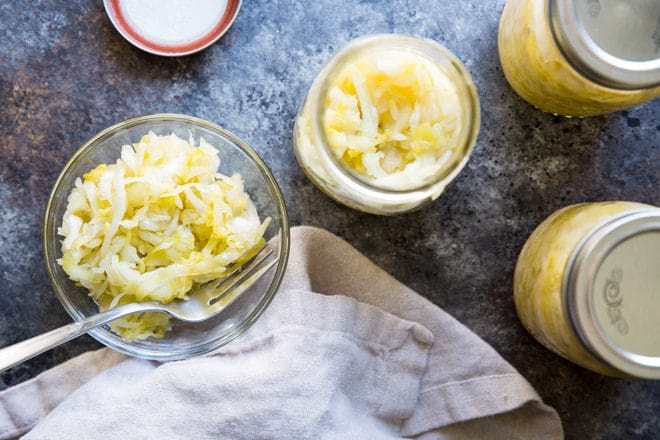
Help! There is some mold on the top of the sauerkraut brine!
Don’t worry—it’s harmless. Skim it off with a clean utensil, double-check to make sure there’s enough brine, press it down well, and cover things up again.
My sauerkraut has a weird brownish layer on top? What to do?
It’s normal, especially if the cabbage rises to the surface. Just keep pressing it down, or use a whole cabbage leaf on top of the sauerkraut, just under the plate.
Do you have to use that much salt when making sauerkraut?
Yes, Kosher salt is an important step in creating an ideal environment in which the cabbage can ferment without growing harmful bacteria. If you’re watching your sodium, rinse the sauerkraut after it goes through a complete fermentation, just before you eat it.
And remember, the 3 tablespoons of kosher salt is for 5 pounds of cabbage.
What’s the ideal temperature for making sauerkraut?
Room temperature between 65 and 75 degrees. In a warmer room, the sauerkraut may ferment quickly, which will make a softer product without as much crunch. A cooler room may need more time to work its magic.
What to eat with sauerkraut:
A big bowl of sauerkraut served up alongside pork chops, sausages– nothing is better. Sauerkraut is fantastic on a Rueben sandwich, in Hot Reuben Dip, or even served on a simple hotdog. Sneak it into wraps, salads, and rice bowls.
Or eat it plain! Do you ever have those days when you know you didn’t eat enough vegetables? Sauerkraut can be ready and waiting for you in the fridge.
If you are into things like “probiotics” or “gut health,” homemade sauerkraut is one of the cheapest ways to eat healthful bacteria (have you priced raw sauerkraut at the store? PRICEY). When I was in culinary school, one of my instructors swore she ate one spoonful of homemade kraut every day, just because it made her feel so good!
Join Us
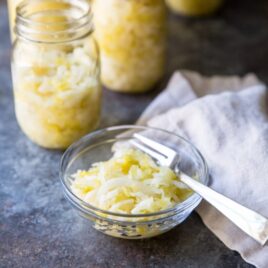
How to Make Sauerkraut
Ingredients
- 5 pounds green cabbage quartered, cored, and sliced lengthwise ⅛ inch thick
- 3 tablespoons kosher salt
- 1 tablespoon juniper berries
Instructions
- Combine half of cabbage and half of salt in large bowl. Forcefully knead salt into cabbage until cabbage just begins to soften, about 3 minutes. Add remaining cabbage and salt and continue kneading until all cabbage has softened and begins to give off moisture, about 3 minutes. Stir in juniper berries.
- Transfer cabbage and any accumulated liquid to sterilized 1-gallon ceramic crock, pressing down firmly with clean fist or sterilized flat headed potato masher to eliminate air pockets. Top cabbage with clean plate just small enough to fit inside crock and weigh plate down with clean rock or quart jar filled with water. Cover with triple layer of cheesecloth, securing in place with rubber band. Let ferment at room temperature, 65 to 75 degrees, for 2 hours.
- Remove cheesecloth and weight, and press plate firmly onto cabbage. Replace weight and cheesecloth and let ferment 2 more hours. Repeat process twice more, or until cabbage is fully submerged under brine. (If brine doesn’t completely submerge cabbage within 24 hours, cover cabbage with mixture of 1 cup water and teaspoon salt).
- Check cabbage every 2 days, pressing down cabbage to keep it submerged (top off with additional brine, made following instructions in step 3, as needed). Let ferment until sauerkraut has reached desired level of fermentation, 5 to 10 days. Transfer sauerkraut and brine to glass jars with tight-fitting lids and refrigerate. Sauerkraut can be refrigerated for up to 2 months.
Notes
Nutrition
Meggan Hill is a classically-trained chef and professional writer. Her meticulously-tested recipes and detailed tutorials bring confidence and success to home cooks everywhere. Meggan has been featured on NPR, HuffPost, FoxNews, LA Times, and more.
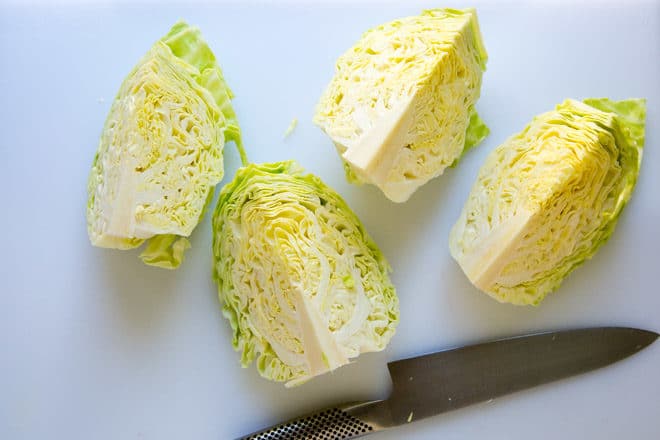
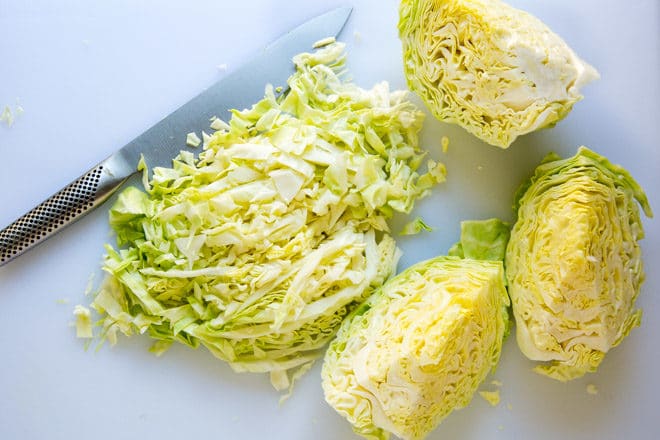
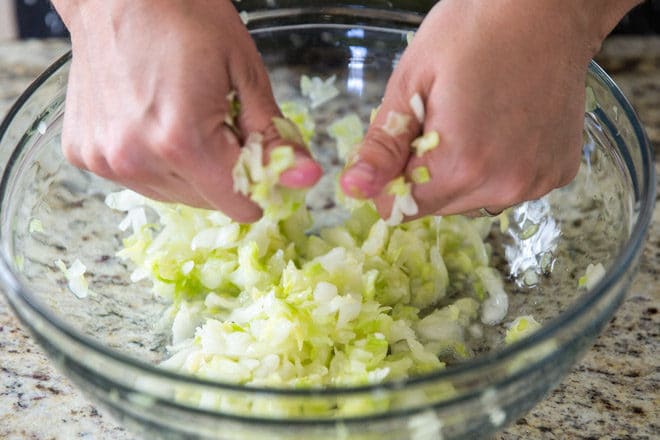
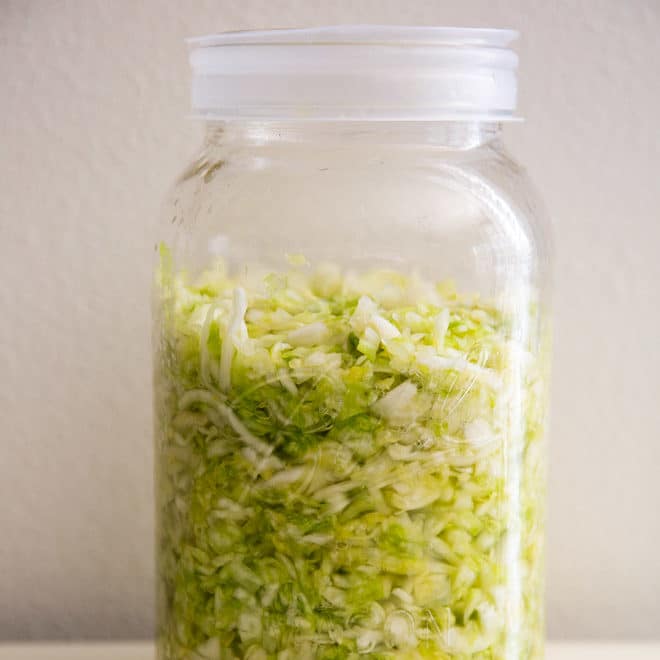
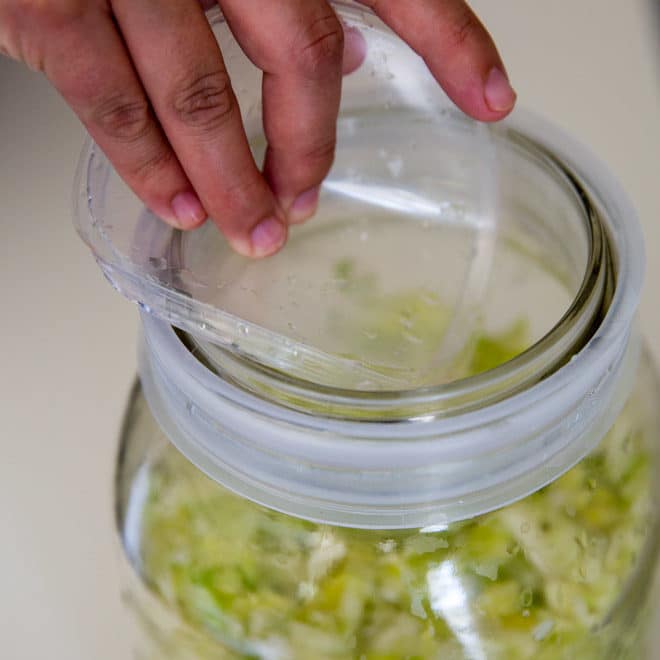
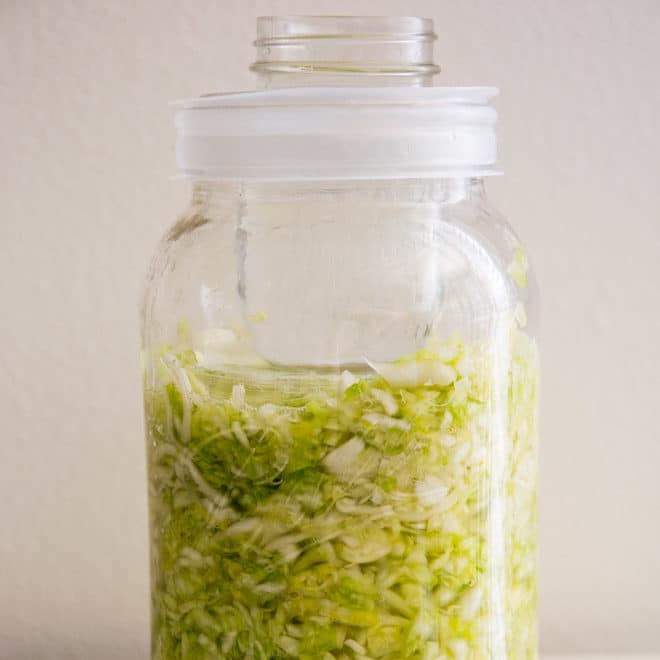
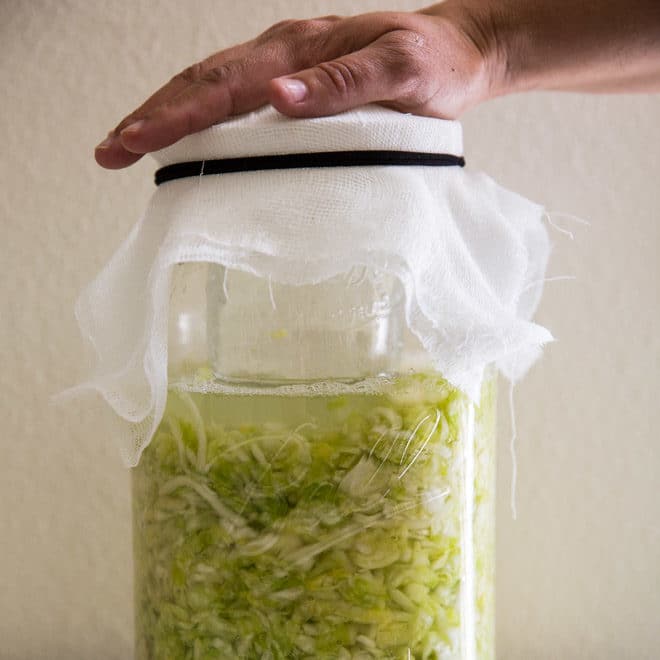
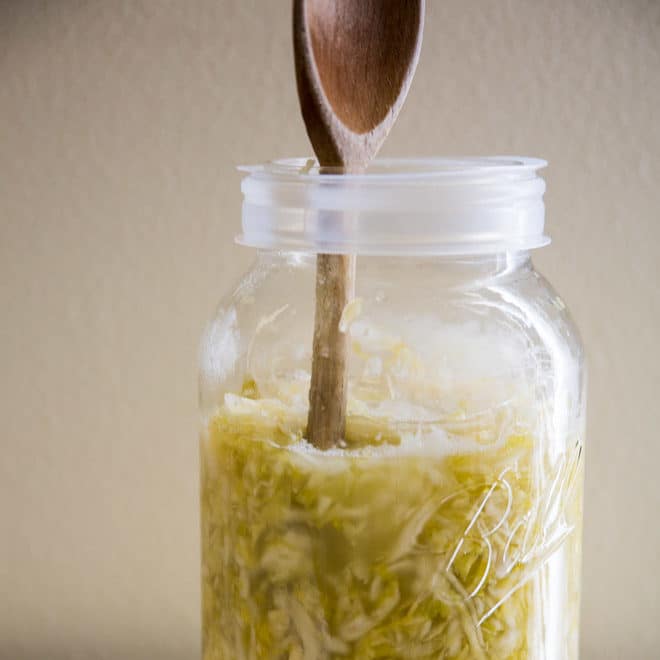
Hi Meggan. I made some sauerkraut last summer and saved the brine (likely a good ounce or so) for a starter. Somebody told me that it would be no good anymore and can’t seem to find any info regarding how long it can be kept. Do you think it’ll still be OK?
Hi Wayne, thank you for your question! I err on the side of caution, and keep my homemade sauerkraut refrigerated up to 2 months. I recommend starting with a fresh brine for your next batch. Sorry I couldn’t be more help. Please write back and let me know how this batch turns out! – Meggan
Can you process these jars of Sauerkraut for months of storage?
Hi Steve! This recipe has not been tested for processing and long term storage, and must be refrigerated and will keep up to two months. I would say if you want to can sauerkraut, I would look for a recipe that has been tested and written specifically for canning, and follow the instructions to a T. Best to be careful and watch out for food illness. Good luck! – Meggan
Could not find my old recipe. this one is even more detailed and extremely well explained, Thank You!
Thank you Ron! I really appreciate that. -Meggan